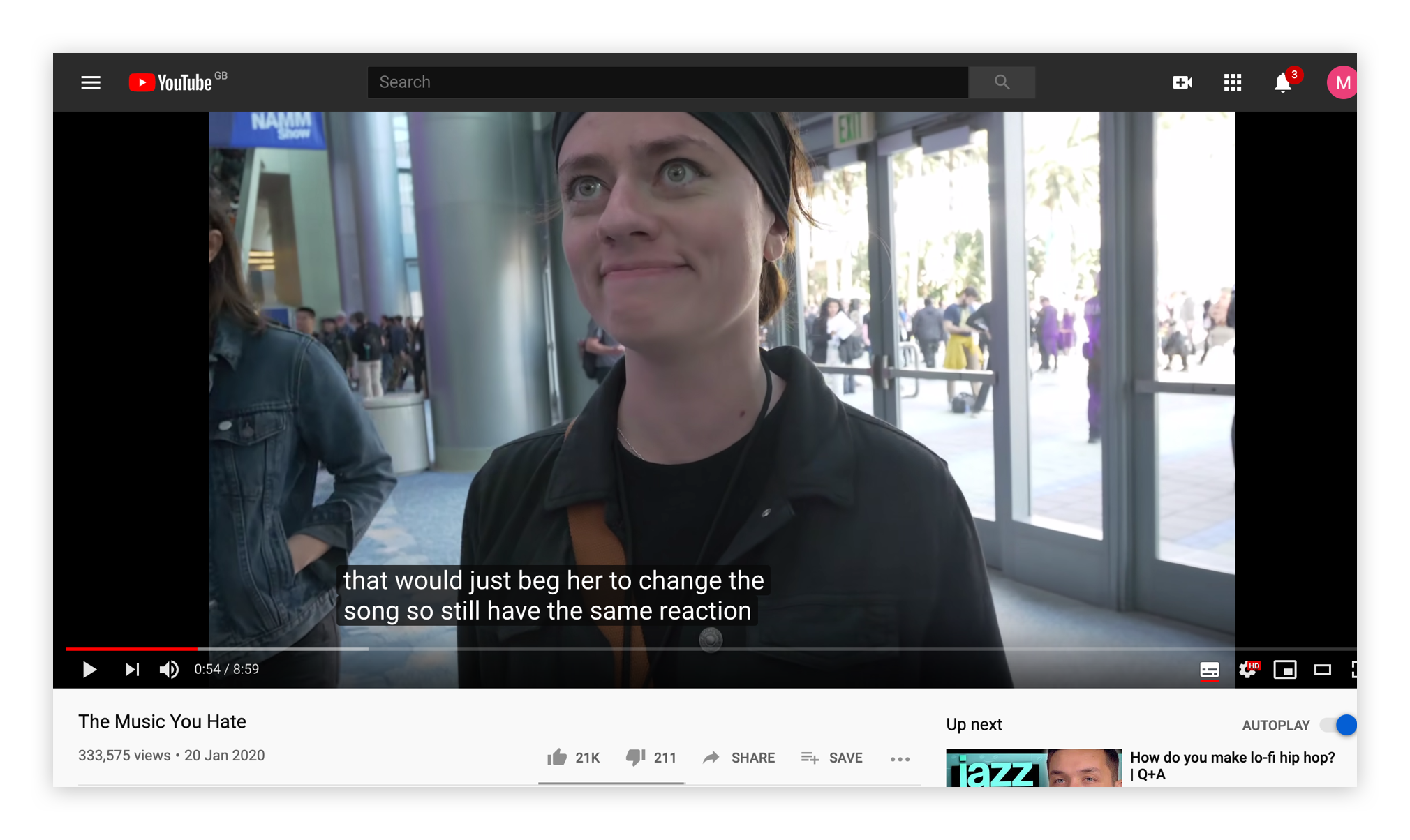Problem:
Users want to know what is being said in video content. The system designers want to facilitate this without manually transcribing all videos.

Solution:
Speech recognition automatically generates subtitles for video content. The user can choose to activate the subtitles as required.
Discussion:
Similar to Automated Alt Text, the benefits of this pattern are more in the efficiency gains to the designers than an improvement in the experience of the end users, who care more about the existence of subtitles than their source.
That said, we shouldn’t overlook the empowering potential of patterns like this — it isn’t that the users should be wowed by an AI automagically producing content, but rather that often the deployment of automation functionality like this can mean the difference between the content existing or not. In the case of automatically generated subtitles for video, this can make previously inaccessible content available to users with hearing impairments, which is of immense value to them.